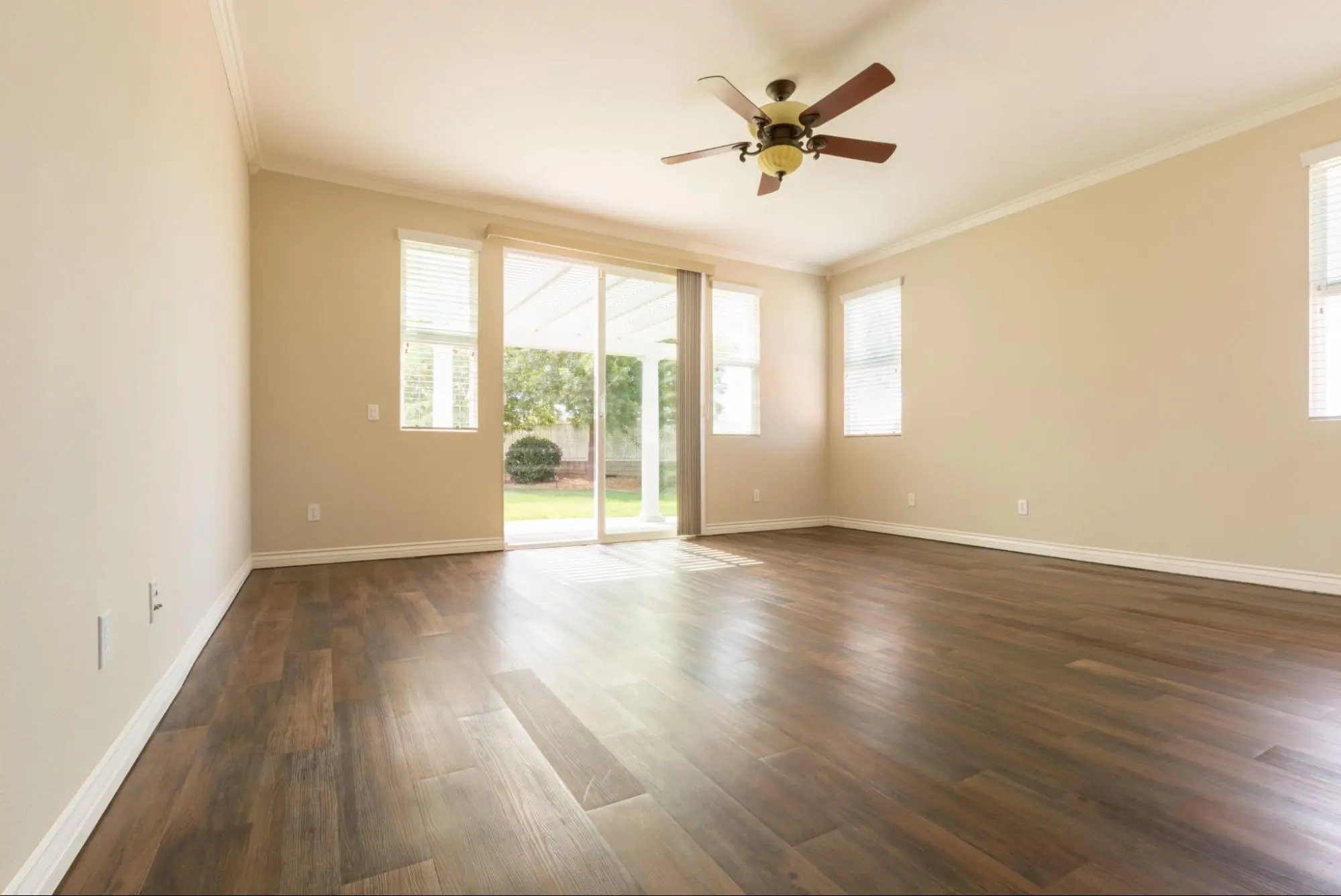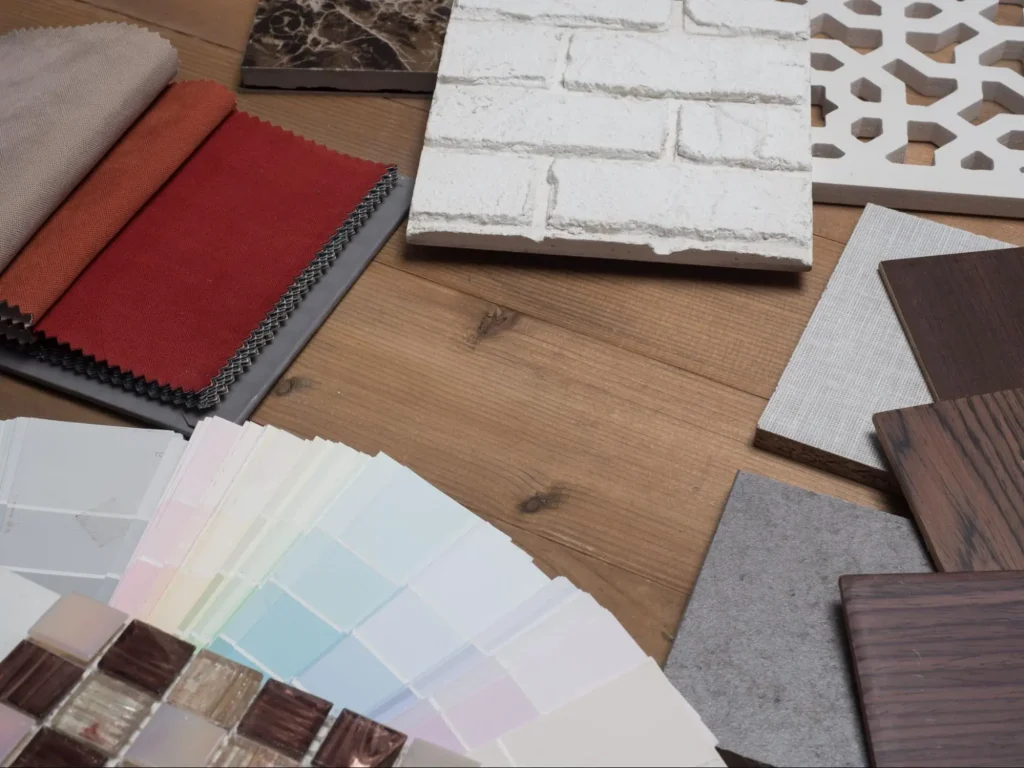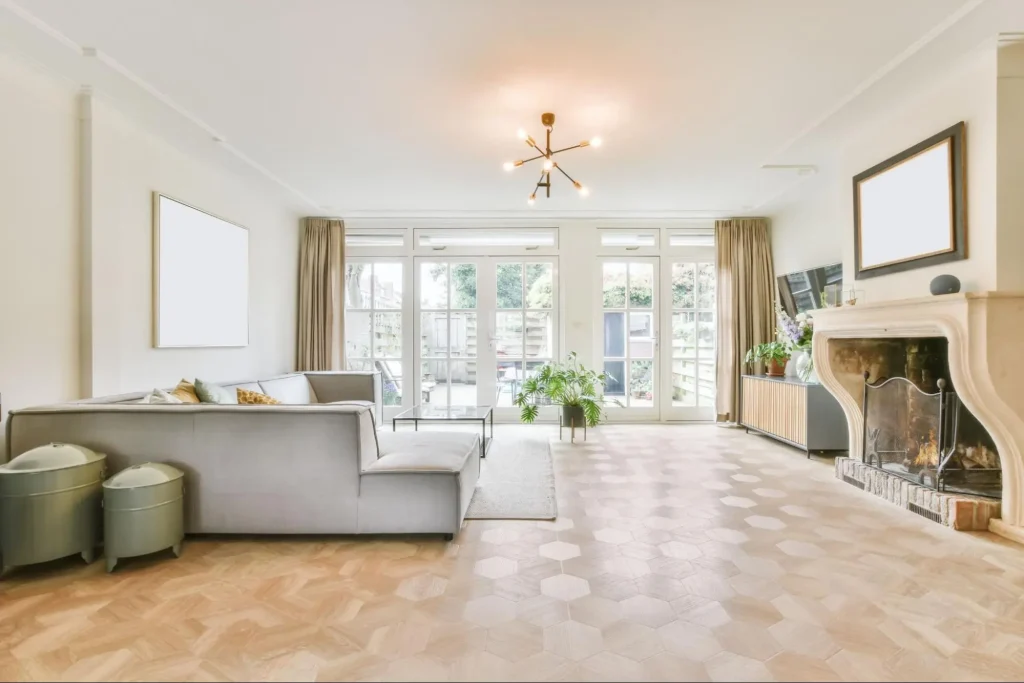
Choosing the right flooring for every room in your home can be a daunting task. With so many options available, it can be challenging to determine which flooring material is best suited for each room in your home. The right flooring can enhance the function and style of each room, while also fitting within your budget.
Factors to consider when selecting flooring include the function of the room, the style of your home, and your budget. For example, if you have children or pets, you may want to consider a flooring material that is durable and easy to clean, such as vinyl or tile. On the other hand, if you are looking to create a cozy and inviting atmosphere, carpet may be the best option for your bedroom or living room.
When it comes to selecting the right flooring for your home, it’s essential to weigh the pros and cons of each material and consider the installation and cost considerations. In this article, we will explore the different types of flooring materials available, and specific recommendations by room.
When it comes to selecting flooring for your home, there are several factors to consider to ensure that you choose the right type of flooring for each room. Some of the key factors to consider include the room function and location, foot traffic and durability, moisture levels, and maintenance and cleaning requirements.
The function and location of the room is an important factor to consider when selecting flooring. For example, a kitchen will require a flooring material that is waterproof and can withstand high levels of moisture. On the other hand, a bedroom or living room may not require such a high level of durability and moisture resistance.
The level of foot traffic and durability needed for each room will also play a role in selecting the right flooring material. High-traffic areas such as hallways, entryways, and living rooms will require more durable flooring materials such as hardwood or tile. On the other hand, low-traffic areas such as bedrooms may be able to use less durable materials such as carpets.
Moisture levels are another important factor to consider when selecting flooring. Rooms with high levels of moisture such as bathrooms, laundry rooms, and kitchens will require a flooring material that is waterproof and can withstand moisture. Tile, vinyl, and concrete are all good options for these types of rooms.
The maintenance and cleaning requirements of each flooring material should also be considered when making your selection. For example, hardwood floors require regular cleaning and maintenance to keep them looking their best, while carpets may require more frequent cleaning to prevent stains and odors from setting in. Tile and vinyl are both easy to clean and maintain, making them good options for busy families and pet owners.
By considering these factors, you can choose the right type of flooring for each room in your home, ensuring that you have a beautiful and functional space that meets your needs and fits your lifestyle.

When it comes to choosing the right flooring for your home, there are several types of flooring materials to consider. Each type has its own unique characteristics, advantages, and disadvantages. Here are some of the most popular types of flooring materials to help you make an informed decision.
Hardwood flooring is a classic, timeless choice that adds warmth and elegance to any room. It is durable, easy to clean, and can last for decades with proper care. Engineered wood flooring is a more affordable alternative to solid hardwood flooring. It is made of layers of wood veneer that are glued together, making it more stable and less susceptible to moisture damage. Both hardwood and engineered wood flooring come in a variety of wood species, finishes, and widths to suit any style and budget.
Laminate flooring is a budget-friendly option that mimics the look of hardwood, tile, or stone. It is easy to install, durable, and low maintenance. Vinyl flooring is another affordable option that is available in a variety of styles, including luxury vinyl tile (LVT) and planks. It is waterproof, scratch-resistant, and easy to clean, making it a popular choice for bathrooms, kitchens, and other high-moisture areas.
Tile flooring is a versatile option that comes in a variety of materials, including ceramic, porcelain, and natural stone. It is durable, easy to clean, and can be used in any room of the house. Ceramic and porcelain tiles are affordable and come in a wide range of colors and patterns. Natural stone tiles, such as marble, granite, and slate, are more expensive but add a luxurious, high-end look to any space.
Carpeting is a soft, comfortable option that adds warmth and insulation to any room. It is available in a variety of materials, colors, and styles, making it a versatile choice for bedrooms, family rooms, and playrooms. However, it can be difficult to clean and may not be the best choice for high-traffic areas or homes with pets. Soft surfaces, such as area rugs and runners, are a great way to add color and texture to any room without committing to wall-to-wall carpeting.
In conclusion, when choosing the right flooring for your home, it is important to consider your lifestyle, budget, and design preferences. By weighing the advantages and disadvantages of each type of flooring material, you can make an informed decision that will enhance the beauty and functionality of your home for years to come.
When it comes to installing new flooring in your home, there are a few things to consider. Two of the most important factors are whether you want to do the installation yourself or hire a professional, and how much you are willing to spend.
One of the first decisions you will need to make is whether you want to install the flooring yourself or hire a professional. While DIY installation can save you money, it can also be time-consuming and require a certain level of skill. On the other hand, professional installation can be more expensive, but it can also ensure that the job is done correctly and efficiently.
If you do decide to go the DIY route, make sure you have all the necessary tools and materials before you begin. You should also do your research and make sure you understand the installation process. Some types of flooring, such as hardwood, can be more difficult to install than others, such as vinyl or laminate.
Another important consideration is how much you are willing to spend on new flooring. The cost of flooring can vary widely depending on the type of material, the quality, and the size of the space you are covering.
For example, vinyl flooring is generally one of the most affordable options, with costs averaging around $3.42 per square foot according to Consumer Reports. On the other hand, hardwood flooring can be much more expensive, with costs ranging from $8 to $14 per square foot.
When budgeting for new flooring, it’s important to consider both the cost of the materials and the cost of installation. If you are hiring a professional, make sure to get multiple quotes and compare them to find the best deal. You may also want to consider financing options, such as a home equity loan or line of credit, to help cover the cost of the project.
In summary, when choosing new flooring for your home, it’s important to consider both the installation process and the cost. Whether you decide to do the installation yourself or hire a professional, and whether you opt for a more affordable material or a more expensive one, make sure to do your research and budget accordingly.

When choosing flooring for your kitchen and bathroom, it is important to consider the high levels of moisture and foot traffic these areas typically experience. Water-resistant and easy-to-clean flooring options are ideal for these rooms.
Vinyl flooring is a popular choice for both kitchens and bathrooms because it is affordable, water-resistant, and can handle high humidity levels. According to Consumer Reports, vinyl planks and tiles come in at around $3.42 per square foot, on average, making it an affordable option. Porcelain or ceramic tiles are also a good choice for kitchens and bathrooms, as they are durable, water-resistant, and easy to clean. Natural stone flooring, such as slate or marble, can add value to your home and provide a luxurious look, but it requires more maintenance than other options.
Living and family rooms are typically low-moisture areas that require comfortable and soft flooring options. Carpet is a popular choice because it provides warmth, insulation, and a soft underfoot feel. It is available in various materials, colors, and styles, making it a versatile choice. Alternatively, hardwood flooring provides a classic, timeless look and can add value to your home. If you prefer a more budget-friendly option, laminate flooring is a good alternative to hardwood flooring.
Bedrooms and low-traffic areas require comfortable and soft flooring options. Carpet is a popular choice because it provides warmth, insulation, and a soft underfoot feel. It is available in various materials, colors, and styles, making it a versatile choice. Hardwood flooring is also a good option for bedrooms, as it provides a classic, timeless look and can add value to your home. If you prefer a more budget-friendly option, laminate flooring is a good alternative to hardwood flooring.
Overall, when choosing flooring for specific rooms in your home, it is important to consider factors such as moisture, foot traffic, comfort, and style. By taking these factors into account, you can find the perfect flooring option for each room in your home.
Choosing the right flooring for every room in your home can be a daunting task. However, with a little knowledge and research, you can make an informed decision that suits your needs and budget.
When selecting flooring, consider the room’s function and traffic. For example, high-traffic areas such as entryways, hallways, and kitchens require durable flooring that can withstand wear and tear. Hardwood, laminate, and tile are excellent options for these areas.
On the other hand, bedrooms, living rooms, and dining rooms are low-traffic areas that require comfortable and cozy flooring. Carpet is a popular choice for these rooms as it provides warmth and insulation.
Bathrooms and laundry rooms require flooring that can handle moisture and provide a safe, non-slip surface. Vinyl and tile are excellent options for these areas.
When choosing flooring, consider your lifestyle and maintenance preferences. For example, if you have pets or children, consider flooring that is easy to clean and maintain. Additionally, if you’re looking for eco-friendly options, consider bamboo, cork, or reclaimed hardwood.
In summary, selecting the right flooring for every room in your home requires careful consideration of several factors, including function, traffic, lifestyle, and maintenance preferences. With the right knowledge and research, you can make an informed decision that suits your needs and budget.
When it comes to installation, it’s essential to work with a reputable company such as Kaminskiy Care and Repair. We offer professional flooring installation services and can help you choose the right floor for your home. Contact us today!
When selecting flooring for high-traffic areas such as entryways, hallways, and living rooms, it is important to choose materials that are durable and can withstand heavy foot traffic. Some of the most durable flooring options include ceramic or porcelain tile, hardwood, and vinyl plank flooring. These materials are resistant to scratches, stains, and wear and tear, making them ideal for high-traffic areas.
Pets can be tough on flooring, so it’s important to choose materials that can withstand scratches, stains, and other damage. Some of the best flooring options for homes with pets include vinyl, tile, and laminate flooring. These materials are durable and easy to clean, making them ideal for pet owners.
When selecting flooring for a kitchen and living room combo, it’s important to choose materials that are both durable and stylish. Some of the best options include hardwood, tile, and vinyl plank flooring. Hardwood adds warmth and elegance to a space, while tile and vinyl are water-resistant and easy to clean.